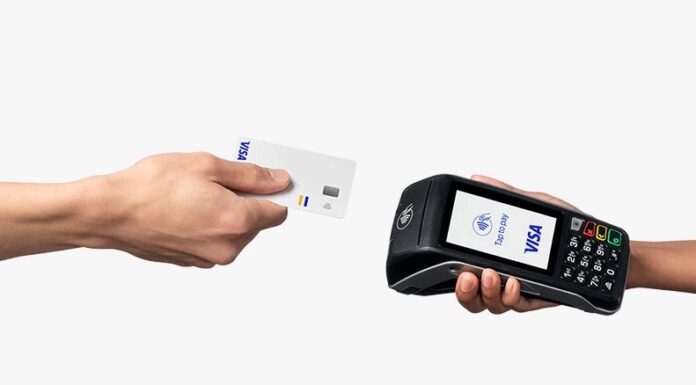Visa AI Commerce Pilot marks the beginning of a major shift in how digital payments will operate across the Asia Pacific. With artificial intelligence rapidly becoming the middleman for shopping, browsing, and paying online, Visa is preparing businesses for a future where AI agents, not humans, will drive the majority of transactions. This transformation is happening faster than expected, and the Visa AI Commerce Pilot arriving in early 2026 gives companies a limited window to upgrade their systems before AI-driven commerce becomes mainstream.
The rise of machine-initiated shopping isn’t subtle anymore. Over the past year, AI-generated traffic surging to retail websites has grown by 4,700%, overwhelming traditional systems built only for human interaction. Many merchants don’t yet realize that they’re already dealing with bots that look like customers, but lack proper verification. Visa’s move aims to solve this invisible crisis before it becomes uncontrollable.

Visa AI Commerce Pilot and Why Asia Pacific Leads the Charge
Choosing Asia Pacific as the testing ground for the Visa AI Commerce Pilot is no coincidence. The region leads in mobile payments, digital-first consumer behavior, and adoption of innovation. Here, shoppers are already comfortable with super apps, QR payments, and digital wallets—making it the perfect environment to validate next-generation AI commerce infrastructure.
Visa describes this moment as a structural overhaul rather than just a technological upgrade. Traditional payment systems were built around predictable human patterns. AI doesn’t follow those rules. Machine agents can shop across multiple merchants simultaneously, compare hundreds of prices in seconds, and complete checkouts at speeds no human can match.
According to Visa’s Asia Pacific Head of Products, T.R. Ramachandran, the Visa AI Commerce Pilot is designed to “connect consumers, AI agents and merchants through secure, scalable solutions.” But behind this statement lies an urgent truth: merchants currently cannot distinguish a real AI assistant acting on behalf of a user from a malicious bot scraping data or attempting fraud.
Inside the Architecture Powering AI Commerce
The infrastructure powering the Visa AI Commerce Pilot represents an entirely new protocol layer for AI-driven transactions. Visa Intelligent Commerce relies on a combination of APIs for tokenization, authentication, payment instructions, and transaction signaling. But the heart of the system is the Trusted Agent Protocol.
This protocol assigns every legitimate AI agent a cryptographic signature confirming two things:
-
The agent is authorized by a real consumer
-
The agent has valid and genuine intent to make a purchase
This approach solves a massive problem. Today’s fraud detection systems analyze suspicious human patterns: unusual locations, odd purchase timing, or abnormal buying combinations. But AI agents naturally behave in ways that would look suspicious in human models. The Visa AI Commerce Pilot introduces a verification layer built specifically for machines.
Even when an AI agent completes a purchase—like booking a flight or ordering groceries—merchants can still identify the actual consumer behind it. This protects loyalty programs, personalization, and customer-relationship data that businesses depend on.
Another standout feature is Visa’s low-code framework. By making integration easier, the Visa AI Commerce Pilot ensures merchants of all sizes can adopt the new infrastructure without massive development costs.
A Growing Network of AI Payment Partners
Visa isn’t building this ecosystem alone. The Visa AI Commerce Pilot connects with major partners including:
-
Microsoft
-
Stripe
-
LG Uplus
-
Ant International
-
Tencent
-
Perplexity AI
These partnerships highlight how AI-powered commerce will function across multiple platforms at once. Imagine a user telling Microsoft Copilot:
“Plan a weekend trip to Kuala Lumpur.”
The AI may:
-
Use Perplexity to search for options
-
Use Stripe to process certain payments
-
Use Visa’s network to execute transactions
-
Interact with multiple merchants across countries
All of this requires a shared, secure infrastructure—exactly what the Visa AI Commerce Pilot aims to deliver.
What This Means for the Future of Digital Commerce
As AI begins to take over tasks like comparing prices, selecting products, and making purchases, merchants will need new strategies. Instead of optimizing websites for human attention spans, businesses must optimize for AI decision-making logic.
Early adopters of the Visa AI Commerce Pilot will gain major advantages:
-
Better handling of agent-driven sales
-
Ability to maintain customer identity through AI intermediaries
-
Stronger fraud resistance for machine-initiated transactions
-
Opportunities to shape the design of future AI payment standards
Visa showcased this new infrastructure during the Singapore FinTech Festival, giving merchants their first real look at how AI-powered payments will operate across millions of locations worldwide.

The Countdown to 2026
Fourteen months might seem like enough time, but for businesses still operating on traditional systems, the transition will be challenging. Preparing for the Visa AI Commerce Pilot means:
-
Auditing payment architecture for AI readiness
-
Updating fraud-detection tools for machine behavior
-
Rethinking customer experience around AI intermediaries
-
Ensuring systems can authenticate AI agents correctly
Visa isn’t just enabling a new payment method, it is setting the foundation for a completely new digital economy. The Visa AI Commerce Pilot in Asia Pacific will define how agentic commerce functions across the world, shaping the rules, frameworks, and expectations for AI-driven transactions for years to come.

